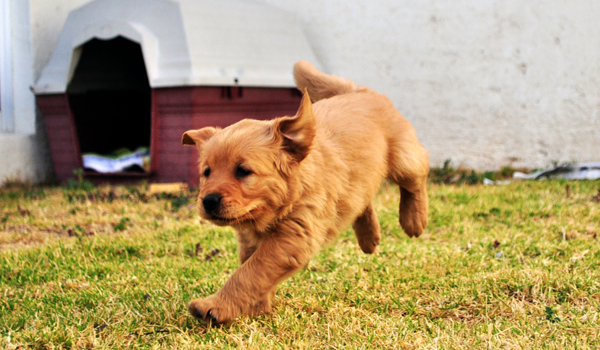When you purchase through links on our site , we may earn an affiliate commissioning . Here ’s how it work .
The Great Dane lumber down the street next to the Chihuahua in its possessor ’s pocketbook are clear examples of the extreme variety of looks that weenie mintage — the most diverse - look mammalian in the world — can cavort .
Scientists have long been rum to empathise what changes in dog cistron brought about by breeding resulted in the wide-eyed spectrum of body case , coat colour , pelt , and temperament present in the more than 400 genetically distinctdog breedstoday .

Of two Chinese Shar-Pei littermates, one (left) exhibits extensive skin wrinkling.
A new study has laid down the first piece of this puzzle by sequence largesections of genesfrom nearly 300 wienerwurst belong to 10 different stock . Among the study ’s findings , detailed in the Jan. 11 issue of the diary Proceedings of the National Academy of Sciences , is the recognition of the gene belike creditworthy for the magnified wrinkles in the peel of Shar - Peis .
Figuring out how genes in dogs are affected by artificial extract ( as well as what those genes do ) could aid us better understand how mankind were influenced bynatural selectionand just which genes perform which function in our own genome ( the entire collection of human genes ) .
stock genes

Dogs ( Canis lupus familiaris ) were first tame around 14,000 geezerhood ago , long before the field of genetics even existed , though most dog breed were develop in the last few centuries . As humans bred dogs for feature such as shorter legs or a docile temperament , they were actually tinkering with genes , while tempt the selection and expression of andiron factor .
Joshua Akey of the University of Washington in Seattle and his colleagues surveil portion of dog genomes from various strain – including the beagle , border collie , Jack Russell Terrier , Shar - Pei and the standard poodle – to tease out which realm read the signature of extract and which gene correspond to certain physical trait ( or phenotype ) .
Previous studies of cad gene have paired factor to their result phenotype , for example , the stumpy legs of Dachshunds , but these field of study started with the physical trait and looked for the corresponding gene or cistron that cipher for it . Akey ’s field of study or else compared gene region that testify signaling of change between breeds and looked for physical trait that might correspond to those change .

The squad find 155 distinct genetic location that show grounds of tampering from breeding . ( The five genes previously link to strain - specific differences showed up in the study , which Akey said give the team confidence that they ’re seeing real effects . )
Akey and his team have n’t been capable to immobilize down the specific gene that have been commute in all of these fix , though for many they can show that a gene that can influence organic structure size or coat color is present .
One trait they have pinpointed – the oversized wrinkle in the skin of Shar - Peis . They compare the genomes of Shar - Peis with extremely wrinkled tegument to those with a slightly smooth coat and found differences in that region .

Man ’s effective champion
From this research and further study of the firedog genome , Akey and others trust to eventually reap both a good agreement of how genes move phenotype ( in click as well as homo ) and what particular genes cypher for . In effect , understanding dogs could help us well understand ourselves .
" And that ’s really the reason that people are concerned in dog genetic and hotdog genomics , " Akey said , though he tot that dogs were fun to study in their own right .

The magnetic variation in dog breeds makes it easier to pin down what genes lead in what phenotype .
" It ’s not quite the needle in the haystack job that it is in man , " Akey told LiveScience .
Akey said that geneticists also desire to liken the signatures of artificial pick in hot dog with those of born selection in humans to see how the two processes might differ , or if they act on genes in much the same way .

trace the gene changes in firedog that result in the body shape and other characteristics of exceptional breed could also reveal the change that might have led to breed - specific diseases and help scientist better understand how genetics impress disease , both in blackguard and humans .
And because dogs have been bred to have certain behavioral traits ( herding , hunt , companionship ) , " I think there are definitely going to be opportunities to learn about the genetic science of deportment in dogs as well , " Akey say .












